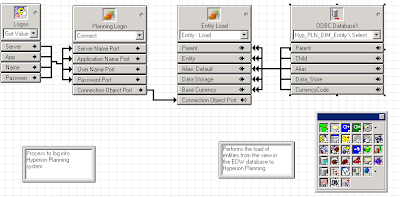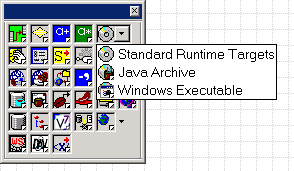Data Transfer from one cube to another.
There are different ways to transfer data from one cube to other.
1. Hyperion Application Link (HAL)
2.Export data using report script and importing data into new cube
3.Jexport
4.XREF
3.Jexport
4.XREF
Today we will learn about XREF calc script, which is used by most who want to transfer data between cubes.
please find sample xref calc script below:
In this example I am trasfering payroll,social, bonus and headcount data from my main P&L (profit and loss) application to work force application.
The first step of XREF is to create a location alias of the source application. In this example my location alias is _LocAliasPL.
You can create location alias using EAS in the following way:
open the application
right click database
Click Edit
navigate to location alias.
Click to create location alias and give the details of the source cube.
open the application
right click database
Click Edit
navigate to location alias.
Click to create location alias and give the details of the source cube.
/*XREF Calc Script Code*/
/*Information */
/*
Script Name : XREF
Created by : Dornakal, Hyperion Consultant, March 27, 2009
Purpose : Copy HR data from main application to work force application
Directions : Check location alias
Versions : Essbase 9.3.1
Assumptions : The Accounts, Time dimensions are Dense and the rest of dimensions are Sparse
*/
/*House Keeping*/
/*Set the calculator cache. */
SET CACHE HIGH ;
/* Display calculation statistics in application log. */
SET MSG Summary;
/* Display calculation completion messages in application log at 20% intervals. */
SET NOTICE LOW;
/*Turn off Intelligent Calculation */
SET UPDATECALC OFF;
/* Enables parallel calculation. */
SET CALCPARALLEL 4;
/* Baseline Fix */
FIX(HSP_INPUTVALUE, Local, USD, FINAL,Actual, FY08, &ActualMnth,&NxtYr,@RELATIVE(Cost_Center,0),"EMPLOYEES")
SET CREATENONMISSINGBLK ON;
FIX(HSP_INPUTVALUE, Local, USD, FINAL,Actual, FY08, &ActualMnth,&NxtYr,@RELATIVE(Cost_Center,0),"EMPLOYEES")
SET CREATENONMISSINGBLK ON;
"PayRoll" = @XREF(_LocAliasPL, "PRODUCT");
"Social" = @XREF(_LocAliasPL, "PRODUCT");
"Bonus" = @XREF(_LocAliasPL, "PRODUCT");
"Headcount" = @XREF(_LocAliasPL, "PRODUCT");
SET CREATENONMISSINGBLK OFF;
ENDFIX;
"Social" = @XREF(_LocAliasPL, "PRODUCT");
"Bonus" = @XREF(_LocAliasPL, "PRODUCT");
"Headcount" = @XREF(_LocAliasPL, "PRODUCT");
SET CREATENONMISSINGBLK OFF;
ENDFIX;
/*END MAIN SCRIPT*/

















